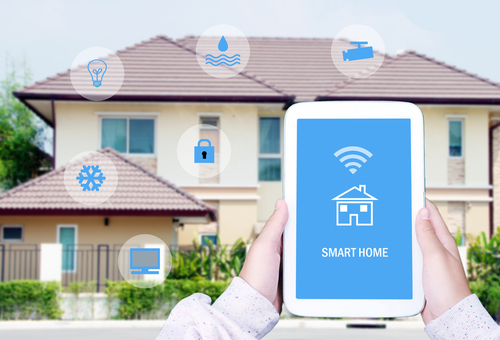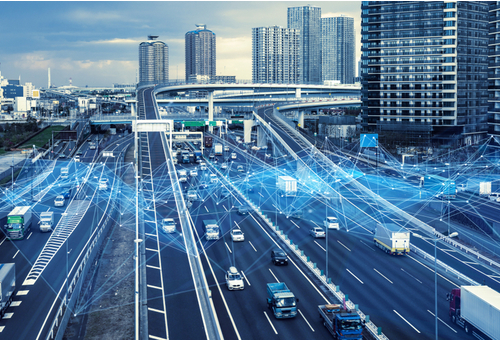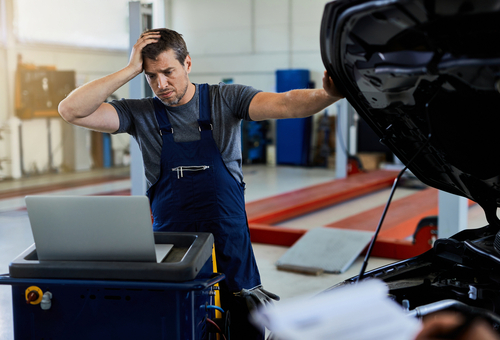
According to this report, the value of the Internet of Things market in the automotive industry is expected to reach approximately 542 billion US dollars by 2025, which value represents an increase of about 16 per cent from 2019 to 2025. While the automotive manufacturing sector will account for a significant portion of this growing market, the problem for us as mechanics is that the bulk of new developments will come in the form of legally mandated IoT features in cars and trucks that we would have to diagnose and fix when they stop working, as if we in the independent repair industry don’t have enough to worry about, what with the proliferation of ADAS systems and what-not in more and more vehicles.
In practice, the electronic telematics systems of vehicles that are connected to one or more computing clouds via one or more Internet of Things networks are several orders of magnitude more complex than the presence of mere ADAS systems is already making them. Thus, when the Competition and Consumer Amendment (Motor Vehicle Service and Repair Information Sharing Scheme) Act 2021comes into operation later in July of 2022, we in the independent repair industry can begin to encounter problems and issues on vehicles that may seem strange, weird, and in some cases, impossible to diagnose.
We will say a bit more about seemingly impossible-to-diagnose issues a bit later on, so before we get to the specifics of connected vehicles and their problems, let us answer this question-

In its simplest form, the term “Internet of Things” describes a network of devices that are connected via the internet, and all of which can be monitored and/or controlled via the internet with a smartphone or computer. In the example shown above, a simple smartphone can control and manage functions like security, lighting, air conditioning, and entertainment in a house from a remote location. In advanced domestic applications, a connected fridge can even order milk from a connected supermarket when it detects that the milk supply is running low.
We don't have to spend too much time discussing domestic applications here, beyond saying that domestic applications of IoT ecosystems are small, compact, and easy to manage since they encompass only one or maybe two controlling devices and a handful of appliances in a single house.
However, with the increasingly rapid adoption of IoT features in cars, the continent-wide supporting networks that are now being developed will include not only all the vehicles that are connected to those networks, but also millions of objects that will include (among other things) traffic lights, traffic signs, pedestrian crossings, road markings, traffic flow sensors, and parking spaces/meters.
While most of these connections are currently maintained by vehicle-based telematics systems where 5G connectivity is available, all of the above information will eventually be shared in real-time by all connected vehicles that are present within a specified area. While connectivity issues with infrastructure will not be our problem to resolve, we can look forward to diagnosing and fixing issues on vehicles that are equipped to-
- and to then transmit that information via IoT connectivity to OEM manufacturers, repair facilities, parts suppliers, and even to law enforcement agencies and emergency services if the situation warrants it.
While the above may be mildly interesting to some readers, it is necessary to point out that by 2025, most, if not all new cars sold globally will have at least some degree of IoT connectivity. In fact, the current fierce competition between OEM manufacturers to see who can cram the most IoT features into their products in the shortest possible time is not so much driven by their desire to provide car owners with an improved driving experience, as it is driven by a desire to maintain their market share(s).
More to the point, though, the competition for market share is in its turn driven by governments and regulatory bodies the world over that are increasingly granting funding and approvals for research into-
As a matter of fact, in Russia, accident alert systems have been a legal requirement in vehicles since 2015, while public transport vehicles in India have been required to incorporate tracking systems and other IoT connectivity features since 2018. Likewise, all new vehicles made and sold in the EU have been required to incorporate both accident alert and tracking systems for several years, which begs the question of-

Realistically, it will take several years before the infrastructure that is required to take meaningful advantage of IoT connectivity is established in Australia, even though most, if not all cars imported into the country will arrive with varying degrees of connectivity built into them. Therefore, it is unlikely that the independent repair industry will be run off its collective feet by customers complaining of issues with the telematics systems in their new vehicles for at least the next few years.
Nonetheless, this could change sooner than we might like. Depending on how soon owners of new vehicles become comfortable with the fact that the independent repair industry can fix their vehicles, and how quickly the required infrastructure is rolled out in metropolitan areas, we could begin to see vehicles that say, fail to communicate with traffic lights and/or other connected vehicles, much sooner than we might like.
We stated elsewhere that we would return to hard-to-diagnose telematics issues, and we will, but before we get to the specifics, let us take a closer look at three of the most common features of IoT connectivity on new vehicles, starting with-
While systems that use cameras to monitor a driver’s eye movements of to infer the driver’s level of attentiveness have been in use for many years in high-end vehicles, new IoT-based systems even in mid-range models now take this function to new levels of complexity and efficiency.
New systems that are already in widespread use are based on so-called “smart seats” that incorporate several sensors that monitor the driver’s heart rate and breathing pattern continuously. As a practical matter, this system is roughly analogous to how polygraphs (lie detectors) work, in the sense that a reduced alert level caused by fatigue and/or intoxication produce specific and predictable physiological changes in the human body.
For instance, a slower heart rate and shallower breathing pattern equate to a reduced state of alertness, which condition will set off several alarms that may be visual, auditory, or tactile. So apart from flashing lights and ringing alarm bells, such a warning may include a vibrating steering wheel, vibrating panels in the seat, or a combination of both.
Other systems now in use in some luxury vehicles obtain physiological data on the driver from sensors in seatbelts. These sensors are designed to measure reaction times in stressful situations, such as during violent evasive maneuvers, or a failure to apply the brakes when the driver is faced with an impending collision.
In both these cases, the driver’s heartbeat and breathing pattern are directly related to his reaction time or lack of reaction to a potentially dangerous situation. In such situations, the vehicle's IoT connectivity may initiate calls to emergency services, other connected vehicles, or infrastructure in the immediate vicinity, as well as to law enforcement agencies if the situation warrants such a call.
As mechanics and technicians, we all recognise the importance of preventative maintenance, but the predictive maintenance via the IoT now gives the adage that says prevention is better than cure an entirely new meaning and functionality that goes a long way beyond illuminating scheduled service and oil change warning lights.
In practice, the system continuously monitors every aspect of a vehicle's operation in real-time with dedicated sensors and software that not only monitors the rate of wear of critical components, but can also detect abnormal loads on components. In a fully functional monitoring system, observed values are compared to the expected lifetimes of parts and components, which makes it possible for the system to predict when a failure is likely to occur.
There are too many possible examples of how this works to list here, but we can consider engine temperature as one such example. While we know that mapped thermostats are more reliable than purely mechanical thermostats, the fact is that even electronically controlled mapped thermostats can, and do fail without warning.
So with a predictive system, the operation of a thermostat, including a mapped thermostat, is monitored continuously as a function of observed engine temperatures over time. Therefore, the system can detect a change, or deterioration in the operation of the thermostat long before the deterioration produces swings in the engine’s temperature that are large enough to be noticeable on the temperature gauge.
When the system detects such a condition, it will evaluate the likelihood of fatal engine overheating occurring, and transmit this data via the vehicle’s IoT connectivity to the nearest dealer or other repair facility, parts suppliers, as well as to the OEM manufacturer, who collects similar data from all other products in its stable.
Regardless of who ultimately receives this information, the biggest advantage of this system is that it also alerts the driver to a possible failure of the thermostat, who can then have the vehicle repaired before a potential problem turns into a real problem.
CV2X is a catchall phrase that translates into “cellular vehicle to everything", and describes the various IoT technologies that turn cars into smartphones on wheels. In the rapidly developing world of connected vehicles, however, CV2X is subdivided into four distinctly different categories or levels of connectivity, all of which are interconnected through the Internet of Things. Here are some details of how this works-
V2V (Vehicle to vehicle)
This mode connects all connected vehicles within a certain area via the IoT, and all connected vehicles within this area transmit data to all other connected vehicles. Typical data includes information on each vehicle's speed, the direction of travel, and location, all of which serves to a) monitor and regulate traffic flows, and b), make it easier to direct the movements of emergency vehicles by calculating the least congested routes for these vehicles.
V2I (Vehicle to Infrastructure)
In the context of Vehicle to Infrastructure connectivity, “Infrastructure” includes things like (among many others) traffic lights, traffic signs, tollbooths, speed measuring devices, bus stops, street light poles, traffic counters, and even petrol filling stations.
V2I systems are now being tested in several major cities across the world, and where it is functional, the system collects data from all connected vehicles as they pass each connected infrastructure point. By collating the data, dedicated servers then use complex algorithms to adapt the timing and/or synchronization of traffic lights to “smooth out” heavy traffic flows, or to direct drivers away from congested areas by recommending alternative routes.
V2P (Vehicle to Pedestrian)
Using one of several available mobile phone apps, pedestrians can locate nearby connected taxi's, and obtain estimated times of arrival in a sort of "first come, first engaged" exercise. Moreover, pedestrians can also use mobile apps to change traffic signals to make it easier to cross roadways safely.
V2N (Vehicle to Network)
This is a sort of IoT “channel” that is dedicated to providing drivers with news and updates on local weather conditions, as well as news and status reports on accidents, road closures, and/or traffic diversions. Some recent V2N innovations include the ability to connect or pair a smartphone to the vehicle, and for the driver or other occupant to control various infotainment and climate control functions with voice commands through the connected or paired smartphone.
There are many more IoT functions in use in modern vehicles today, but since limited space precludes listing them here, let us look at-
The car repair industry in Australia as a whole will likely not see a meaningful uptake in IoT connectivity in cars for at least a few years. However, when it does happen, the independent repair industry will be at a significant disadvantage unless the Competition and Consumer Amendment (Motor Vehicle Service and Repair Information Sharing Scheme) Act 2021 changes in meaningful ways.
Sadly, those among us who were thinking that the law would solve all our problems when it is implemented are mistaken, at least as far as advanced telematics and CV2X communications systems are concerned. In fact, as far as these systems are concerned, we in the independent industry will be in much the same position regarding a lack of service and repair information, as we were when fuel injection replaced carburettors.
Back then, none of us knew anything about fuel injection and their control systems and most of us were obliged to learn about these systems and their issues on our own. That is ancient history, however, but this time around, the law actively prevents the independent repair industry from accessing critically important repair and service information.
Note that it is not this writer’s intention to bash the law here, but in case you are not familiar with the law as it stands now, here is what it says regarding its objectives, (quoted verbatim from the Act, but note that italics and bolding were added for emphasis by this writer)-
The objects of this Part are to:
(a) promote competition between Australian repairers of passenger and light goods motor vehicles and establish a fair playing field by mandating access, on fair and reasonable commercial terms, to information used to diagnose, repair, service, modify or dismantle scheme vehicles; and
Note: These vehicles are defined as scheme vehicles (see section 57BA).
(b) enable consumers to have scheme vehicles diagnosed, repaired, serviced, modified or dismantled safely and effectively by an Australian repairer of their choice; and
(c) encourage the provision of accessible and affordable information about scheme vehicles to Australian repairers, and to registered training organisations (for training purposes); and
(d) protect safety and security information about scheme vehicles to ensure the safety and security of consumers, information users and the general public; and
(e) provide for the resolution of disputes about the application of this Part.
Division 2 of the Act further defines scheme vehicles as, among other things-
A scheme vehicle is:
(a) a light goods vehicle, within the meaning of a national road vehicle standard made under the Road Vehicle Standards Act 2018 that specifies definitions and vehicle categories for the purposes of that Act, that was manufactured on or after:
(i) 1 January 2002; or
(ii) a later date prescribed by the scheme rules
At first reading, the above creates the impression that all repair and service information on all vehicles covered by the scheme will be made available to all Australian repairers. However, at it turns out, some types of information are specifically excluded from the scheme. Note the following, which is again quoted directly from the Act-
Exceptions
(2) However, scheme information does not include any of the following:
(a) a trade secret;
(b) the intellectual property of a person, other than intellectual property protected under the Copyright Act 1968;
(c) a source code version of a program;
(d) data automatically generated and transmitted by a scheme vehicle, while it is being driven, regarding driver or vehicle performance;
(e) global positioning system data;
(f) information supplied, or to be supplied, only to a restricted number of Australian repairers for the purposes of developing solutions to emerging or unexpected faults with a scheme vehicle;
(g) information that is commercially sensitive about an agreement between a data provider and another person;
(h) information relating to an automated driving system of a scheme vehicle;
(i) any other information prescribed by the scheme rules.
Note: Scheme information may include safety and security information (see the definition of safety and security information in section 57BF). However, for restrictions on the supply of safety and security information to Australian repairers and scheme RTOs: see section 57DB.
(3) An automated driving system is a system which has an SAE level of 3 or greater under the Surface Vehicle Information Report J3016 published by SAE International, as amended from time to time.
Two points in this list of exclusions have a direct bearing on whether (or not, as the case may be) we in the independent repair industry will be able to diagnose and repair advanced telematics systems, these two points being “trade secrets”, and “data generated by vehicles while they are being driven”. Let us discuss these in turn, starting with-
Trade secrets
It should be noted that what follows is in no way intended to attack, denigrate, or diminish the importance and/or validity of trade secrets in the automotive manufacturing sector, or the insistence of manufacturers that dealers do not divulge trade secrets that they may be aware of.
That said though, the Act does not clarify the concept of trade secrets, nor does it list examples of what may legitimately be described as “trade secrets” by car manufacturers. Therefore, in practice, it is entirely possible that specific implementations of telematics systems/protocols by any given manufacturer that differs from how other manufacturers implemented the same system or functionality, could be seen as "trade secrets" by one or more manufacturers.
Therefore, it is conceivable that all technical, service, and/or repair information on entire telematics systems may legitimately be withheld from independent repairers. We are not suggesting that all, or even most manufacturers will automatically take this position, but the long and the short of the exclusion of trade secrets from scheme information is that independent repairers could potentially miss out on significant volumes of business because they cannot access some categories of technical information.
Information generated by vehicles
One could understand the exclusion of personal information on drivers from scheme information, but what is less clear is why the data that vehicles generate is excluded.
In connected vehicles, several ADAS functions, including Automatic Emergency Braking, are dependent on the vehicle being able to communicate with connected infrastructure and other connected vehicles. Thus, to explore this point further, let us use as an example a connected vehicle that almost crashed into a bus because the Automatic Emergency Braking failed to activate in time, and the driver only managed to avert the crash by driving the vehicle into a ditch beside the road.
If we assume that the vehicle was in a connected environment, the logical starting point to diagnose the brake system failure would be to look at the data the vehicle had generated directly before the incident. In terms of practicalities, this information would be analogous to an OBD II freeze frame, in the sense that the information would show whether (or not) the vehicle had been communicating with other connected vehicles and objects immediately before the incident occurred.
This information would also include data points on the vehicle’s speed at the time of the incident, the vehicle’s direction of travel, and operational parameters such as throttle position, rate of acceleration, brake force applied by the driver (if any), steering angle, yaw rate(s), and the rate of deceleration. Other information would indicate whether (or not) other ADAS systems like Adaptive Cruise Control was in operation at the time of the incident.
Taken together, this information would be extremely useful in determining the cause of the brake system failure. For instance, it could be that the Adaptive Cruise Control failed to disengage, or it could be that a defective steering angle sensor prevented the activation of the Automatic Emergency Braking system. It could also be that the IoT connectivity in the vehicle failed altogether, which would have translated into the vehicle not “seeing” the connected bus that suddenly emerged from a side road.
It hardly matters what caused the hypothetical near-crash, because if an independent repairer does not have or cannot gain access to the IoT “freeze frame”, either from the manufacturer or via an enabled scan tool, it would be almost impossible to diagnose the cause of the Automatic Emergency Braking failure. In practice, the only effective remedy the vehicle owner would have in a case like this would be to take the vehicle to a dealership, which could no doubt extract the required information in a matter of seconds.

The short answer is that unless the law is changed to make at least some types of data that vehicles generate available to the independent repair industry, we will be left up the proverbial creek without paddles when we encounter some types of issues, failures, and/or malfunctions on connected vehicles.
Fortunately, though, we will likely not begin to encounter these types of issues, failures, and/or malfunctions for a few years yet. However, that does not absolve us of our responsibility to learn as much about connected vehicles and the technologies that underpin the IoT in vehicles as we can from as many sources as we can, in the shortest possible time.
The fact is that new automotive technologies have a way of creeping up on us when we are not looking, but in the case of the IoT, we cannot afford to be caught unawares, because internet connectivity might very well become a minimum requirement to operate, diagnose, and repair motor vehicles much sooner than we might think- or want.